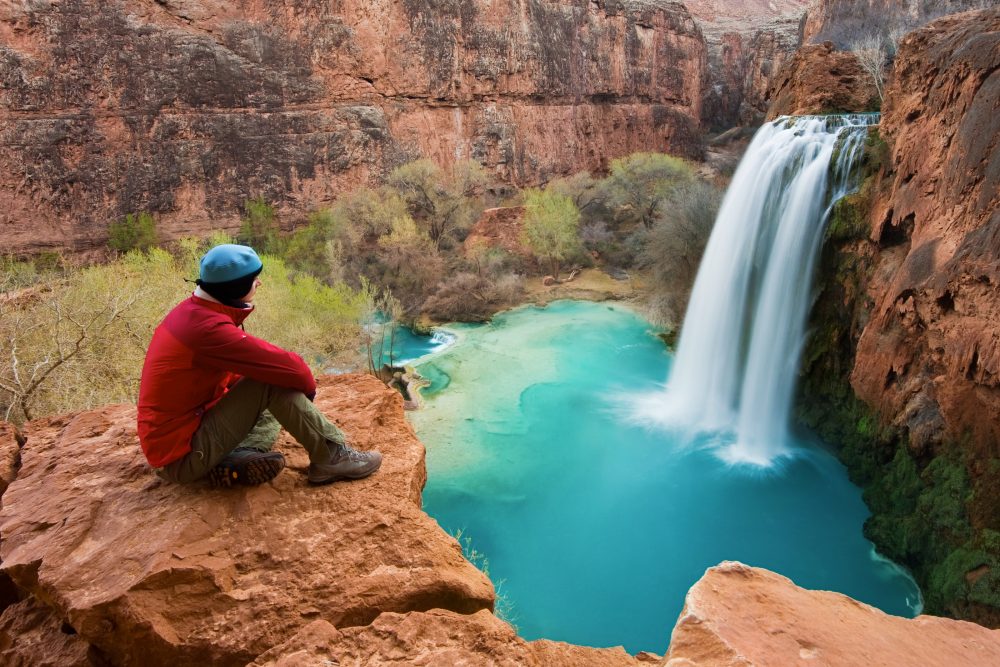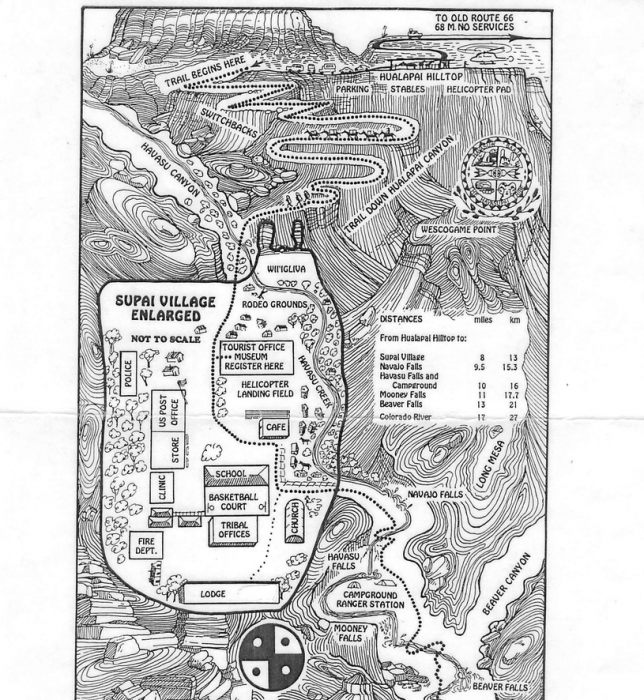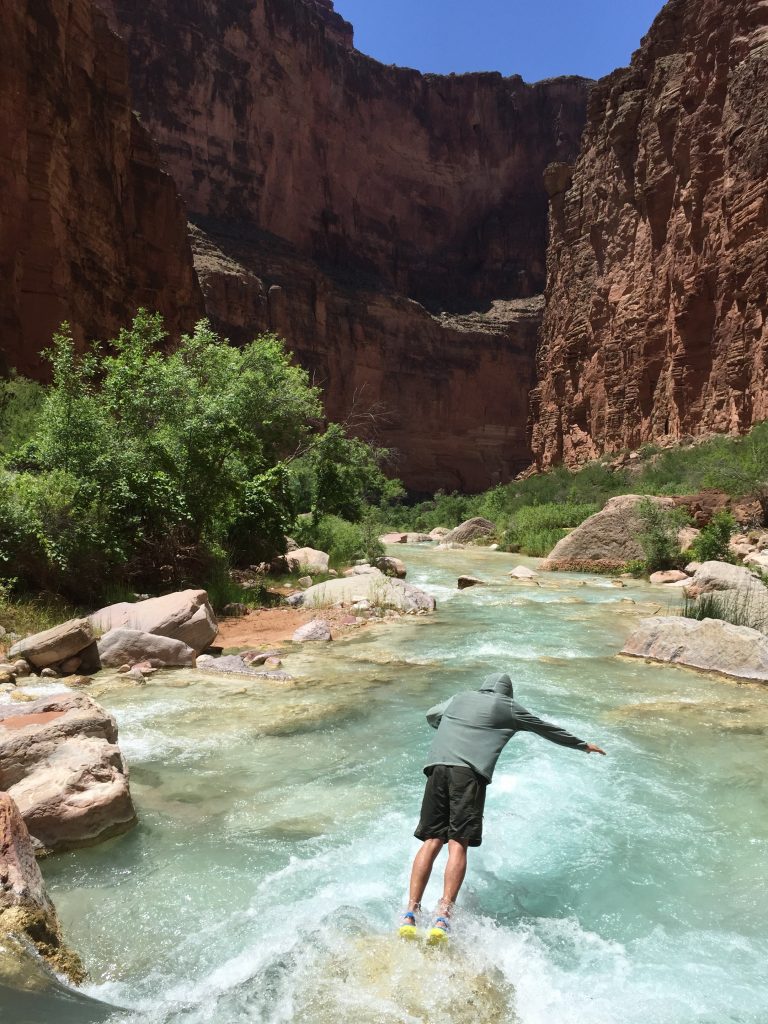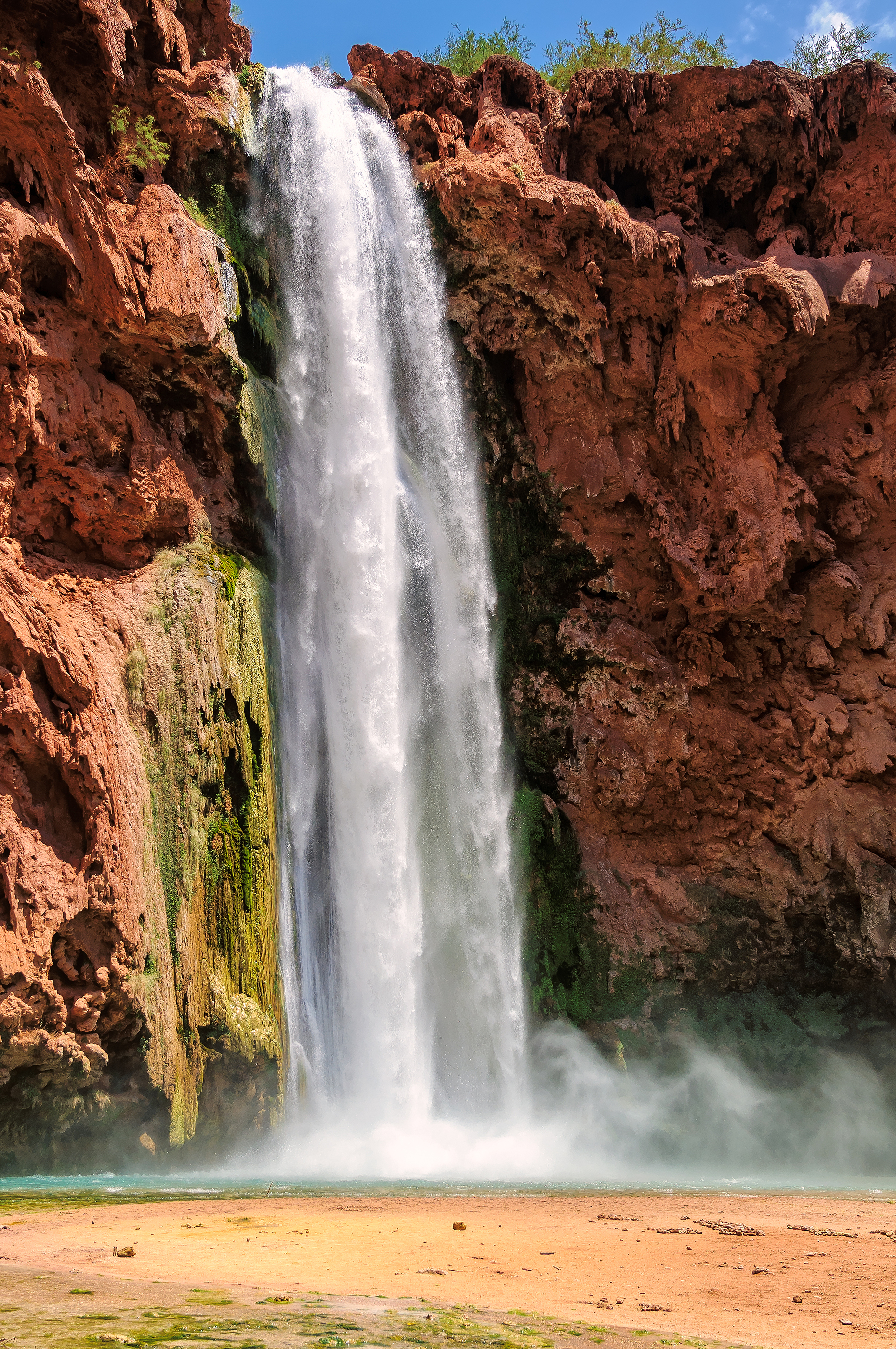Water is scarce in the desert. What little you do find is usually seeping from a tiny crack in the bright red sandstone or a murky, stagnant puddle of rainwater lazily evaporating into the arid heat. Rivers can be clear but are quick to muddy after any precipitation. The Colorado River is, more often that not, a deep chocolate brown. But in the middle of the Arizona desert, just inside the towering expanse of the Grand Canyon, the beautiful azure waters of Havasu Creek and the Little Colorado River offer a stark contrast to the sea of earth tones.
The blue enthralling. It feels tropical. It feels alien. Surrounded by endless shades of taupe and red it shocks your senses as you stare in awe. It almost feels unnatural to swim in, but a dip in this magical liquid – which resembles electric blue Gatorade – is part of the experience. I spent the better part of a day quietly floating around the pools, transfixed. Hours had passed before we realized we needed to start heading down river.
The Havasupai Tribe has lived among these waters for 800 years. Their name comes from these waters – Havasu meaning “blue-green waters” and pai meaning “people” – showing just how sacred and rare these electric azure flows are.
 The main attraction: Havasu Falls
The main attraction: Havasu Falls
Rafters on the Grand Canyon get to stop at both the confluence of the Little Colorado River and Havasu Creek to swim, hike, and take it all in. But, there is a way to get the experience without floating the 228 miles of the Colorado River.
Starting at the Havasupai Hilltop Campground on the Eastern Rim of the Grand Canyon, you can hike eight miles in, camp, and not only swim in the sacred waters of Havasu Creek, but see four stunning waterfalls, all cascading sky-blue from the red rock walls.
 Little Beaver Falls on Havasu Creek. Photo: Chris Ballance
Little Beaver Falls on Havasu Creek. Photo: Chris Ballance
Since this is tribal land, you must make a reservation with the Havasupai Tribe on their website. After descending from the rim, you reach the Supai Village where there is an office, museum, and cafe. From there you can hike two more miles into the canyon to find your campground, where you can set out to explore the length of Havasu Creek and all of the surrounding waterfalls – Havasu Falls, Navajo Falls, Mooney Falls, and Beaver Falls.
 Rough map of the area (not to scale) from the Havasupai site
Rough map of the area (not to scale) from the Havasupai site
This is one of the most surreal and sacred places I’ve ever experienced. Tread lightly and respect the Havasupai Tribe’s rules and wishes; it is their birthright.
Landmarks on this map
|
Havasupai Hilltop (Start of the hike) |
|
Supai Village |
|
Havasu Falls |
|
Beaver Falls |
|
Mooney Falls |
|
Confluence with the Colorado River |
|
Navajo Falls |


